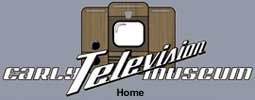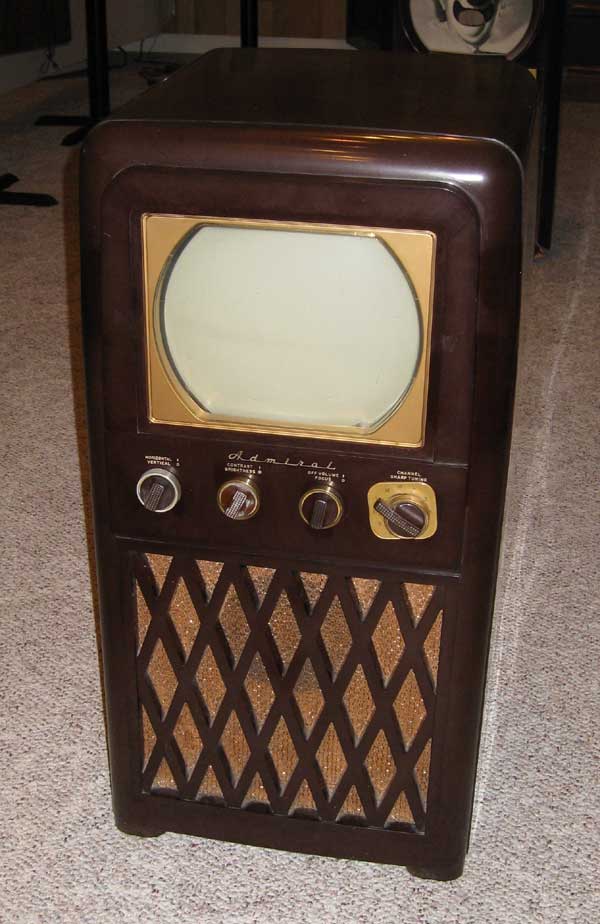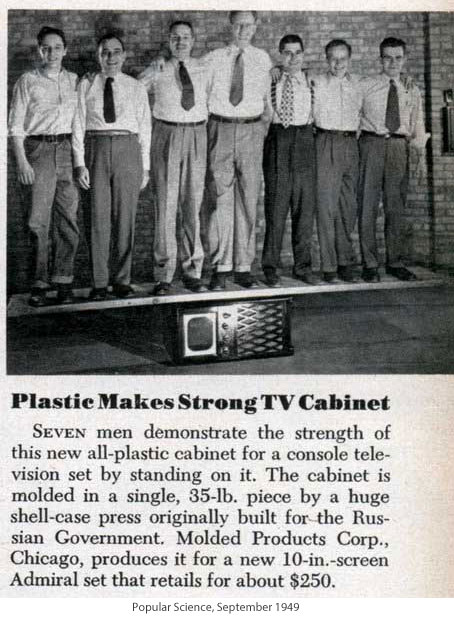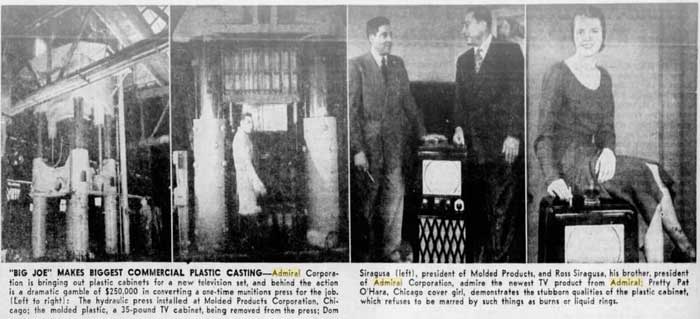Postwar Television Admiral 20X122(click on picture for high resolution image) (1948 - 10 inch) Donated by Art Bilski
Amazing enough the press was war scrap surplus. It was built by Bethlehem Steel for the Russians to make munitions. It never got picked up so the US government used it. After the war it was left for salvage. In 1947 Moulded Products bought it and moved it to Chicago. They had to modify the building on Harrison St. to make it fit. It was so tall it protruded through the roof. After some trial and error they got it to press out a perfect cabinet. 2000 tons of pressure were required. It resulted in a perfect cabinet that required little to no work to finish. It was estimated it saved $100 of labor costs over a similar size wood cabinet. ( Courtesy of Nick Genova) |



